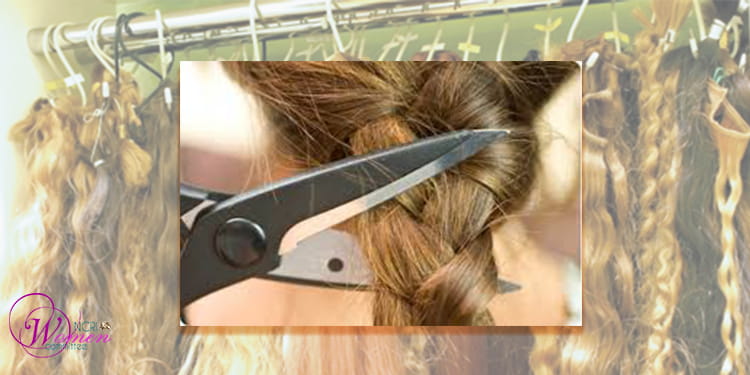Media, experts, and government officials have been talking about the feminization of poverty in Iran for years. The feminization of poverty exacts a heavy toll on women’s bodies, souls, and dignity. Women increasingly take on exhausting and high-risk jobs – from peddling, cobbling, and garbage collecting to even selling their kidneys and eyes. On December 21, state-run newspaper Khorasan reported on the hot market for selling hair.
Many women are so poverty-stricken that they have no choice but to sell their hair and that of their little girls. Selling hair is a story of women who go to hair salons to earn a tiny sum.
Some hair salons put up signs such as “We buy hair.” However, buying and selling natural hair is not limited to hair salons – these days, hair can be purchased and sold via websites, social media channels, and virtual groups.
Buyers of natural hair set prices based on volume, length, color, and condition. Naturally, the longer the hair, the higher the price. Prices start at 300,000 Tomans and can reach 4 million Tomans or more.
One buyer says, “Most of our customers sell their hair due to poverty. There are a lot of them [customers], and now with the Coronavirus outbreak and people being empty-handed, the demand for hair sales has increased” (The state-run Tejarat News website – January 3, 2021).
Advertising hair sales is not limited to one or two specific cases. On the contrary, online ads have targeted all Iranian cities, from the capital to the poorest cities.
A report in the state-run Khorasan newspaper cites painful stories of young women and girls who have sold their hair.
Pariya, 8, sells her golden hair
Pariya is an 8-year-old girl. Crying, she sits in a hairdresser’s chair, waiting for the hairdresser’s scissors to cut her golden hair. The hairdresser says, “If you keep crying, I won’t buy your hair, and then you won’t be able to buy a tablet.“ Pariya’s mother bought a secondhand tablet with the two million Tomans she received for her daughter’s hair.
I feel depressed when my clients are in tears
Sudabeh is a hairdresser who has been buying hair for 4 months. She recounted her story of depression as follows: “In the 4 months since I started buying hair, I’ve seen far too many poor and deprived customers. I’ve wiped so many tears off young and adolescent girls on this stool that I feel depressed. I buy long thick hair and then sell it to hairdressers who use it to make hair extensions for customers who want their hair to remain stylish. It looks good on them for a while and makes a profit, but it’s not worth the misfortunes you must witness” (The state-run newspaper Khorasan – December 21, 2021).
A 10-year-old girl sold her hair to buy a mobile phone. A 50-year-old woman sold her hair to pay for some of her husband’s medication – he became paralyzed after falling from the third floor of the building site where he used to work.
A 21-year-old woman sold her hair to pay her sister’s dowry ahead of the marriage. A 15-year-old girl sold her hair to pay for high school registration costs. These are examples of the clients who came to see Sudabeh over the last 2 or 3 months.
Sudabeh says, “80 percent of the clients come from the suburbs or deprived areas in Mashhad. They are so poor that, in some cases, their hair is so damaged and scarce that it cannot be used.”
The rise in poverty and rampant inflation have made the sale of women’s and girls’ hair a common practice in Iran.
Mohammad Reza Mahboubfar, a social pathologist, spoke about the rise in poverty. “If the poverty line of a family of four in the country was estimated to be at an average of 12 million Tomans per month at the beginning of this year, it has now reached 14 million Tomans per month,” he said (The state-run ROKNA news agency – July 25, 2021).
